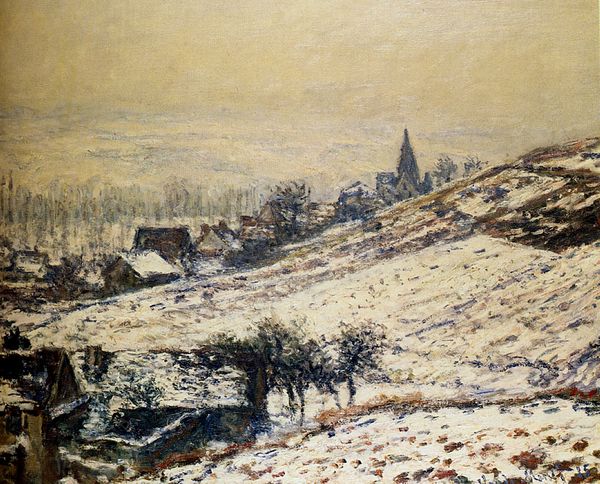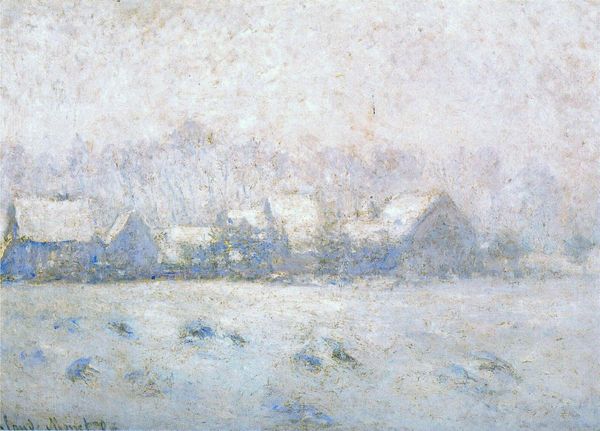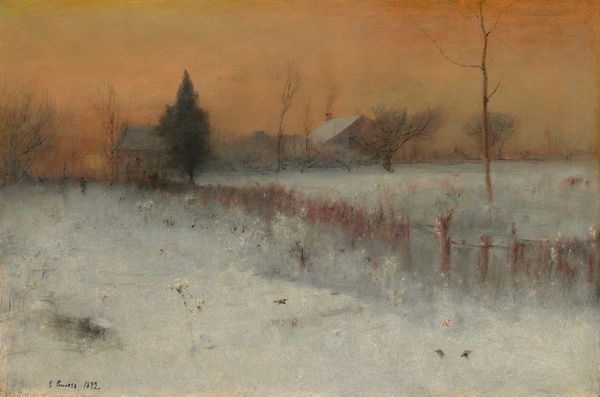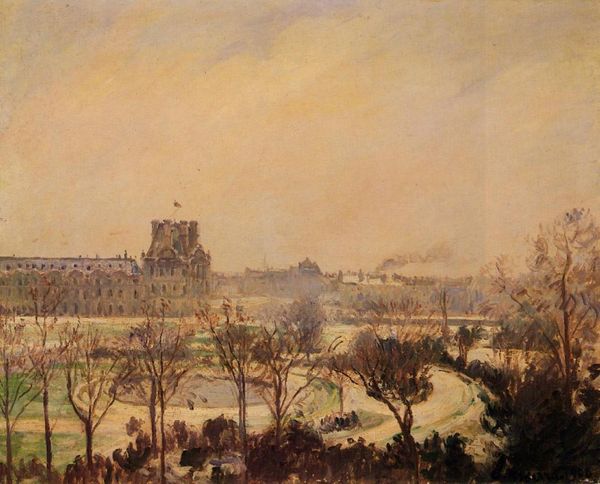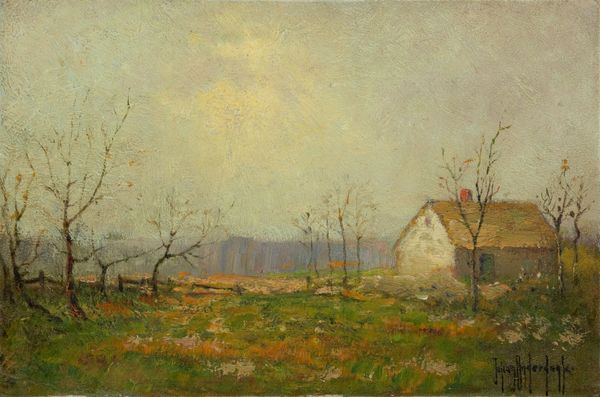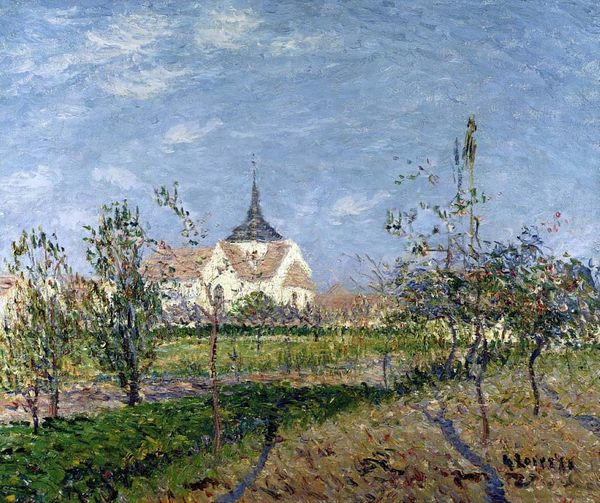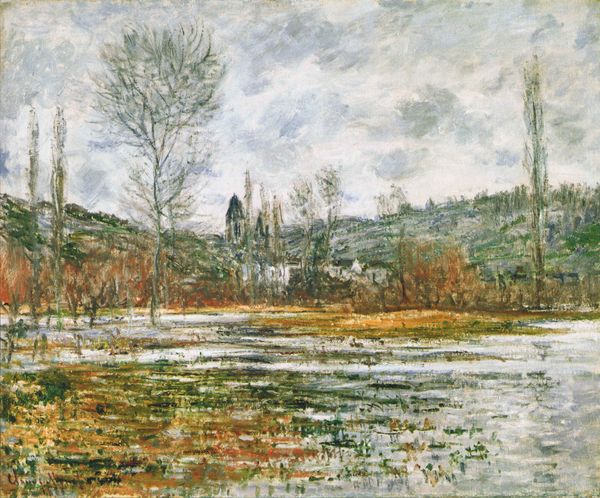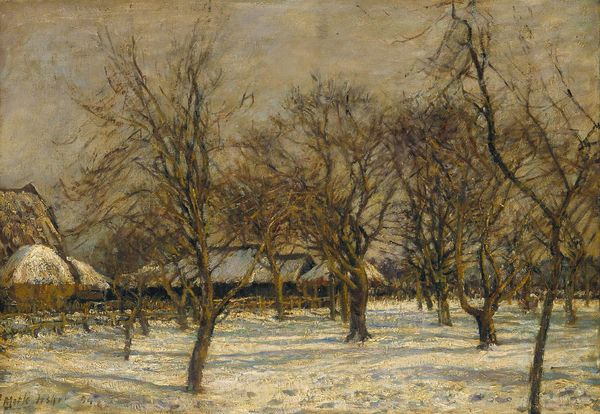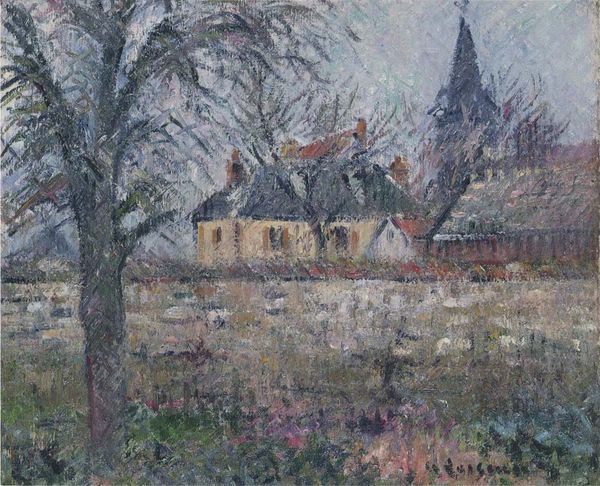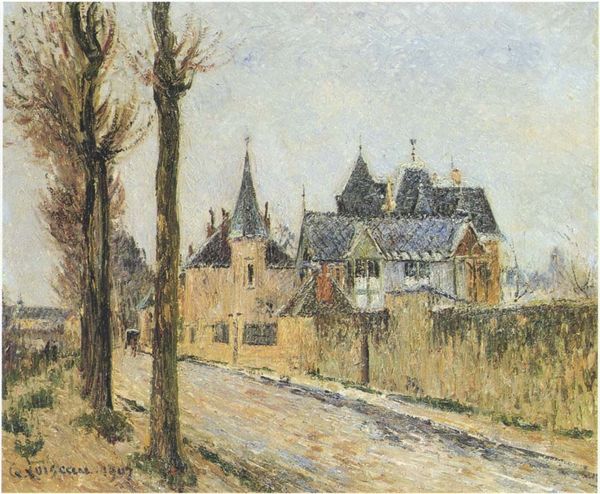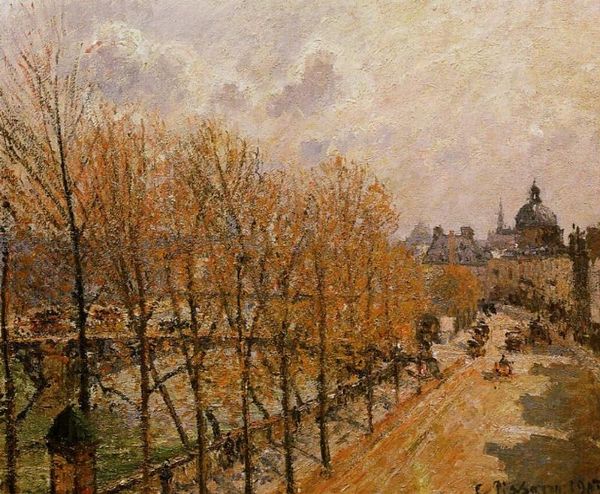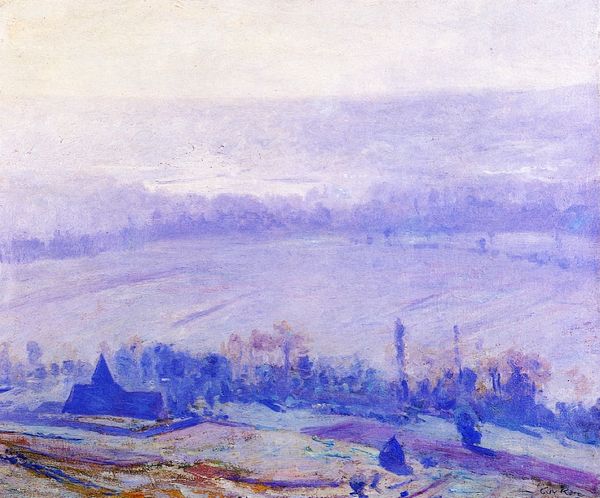
Dimensions: 50 x 60 cm
Copyright: Public domain
Curator: So, we’re looking at Gustave Courbet’s "View of Neuenburg", painted around 1875, using oil paints. It captures a Swiss landscape dominated by a substantial, perhaps even foreboding, castle. Editor: It definitely has this hushed, almost melancholy feel, doesn't it? Like the trees in the foreground are all holding their breath, and that castle... it looks both imposing and somehow vulnerable perched up there. Curator: The painting emerges during a tumultuous period for Courbet. He was imprisoned and then exiled for his involvement with the Paris Commune. This landscape, in a way, marks a turn towards less overtly political subjects but, does it also subtly express his state of mind after all that turmoil? Editor: Maybe. It's interesting how he positions the castle, almost dwarfed by the vastness of the sky. You sense a kind of isolation, even defeat, there. And the palette is so muted. It mirrors his somber mood, maybe. A quiet acceptance, as the light suggests, of the situation as it unfolds. Curator: His earlier work was full of direct social commentary, challenging established academic styles. This piece, while still showcasing his Realist approach to portraying the scene directly from nature, feels like a more internalized expression. What role does history and power have in shaping this individual's work, his place, after all? Editor: Yes. It speaks about how even when trying to capture the plain truth, emotions can inevitably stain what is displayed. The texture itself invites introspection. The application of the paint is a dance of light and shadow, not just rendering reality but also mirroring the artist's spirit at the moment. There are so many tales that reside in its somber mood! Curator: I find it striking how he portrays nature as something equally powerful as architecture. Editor: A power almost in ruins as we move in the historical arc of the artist’s evolution… That touch is a pure expression, perhaps the kindest and the truest. Curator: A valuable interpretation, wouldn’t you say? It helps to reconsider Courbet’s commitment and what the painting says about his transition away from Parisian society during his self-imposed exile. Editor: Exactly. A journey through textures and the echoes of a man’s exile that transform observation into the heartfelt.
Comments
No comments
Be the first to comment and join the conversation on the ultimate creative platform.
